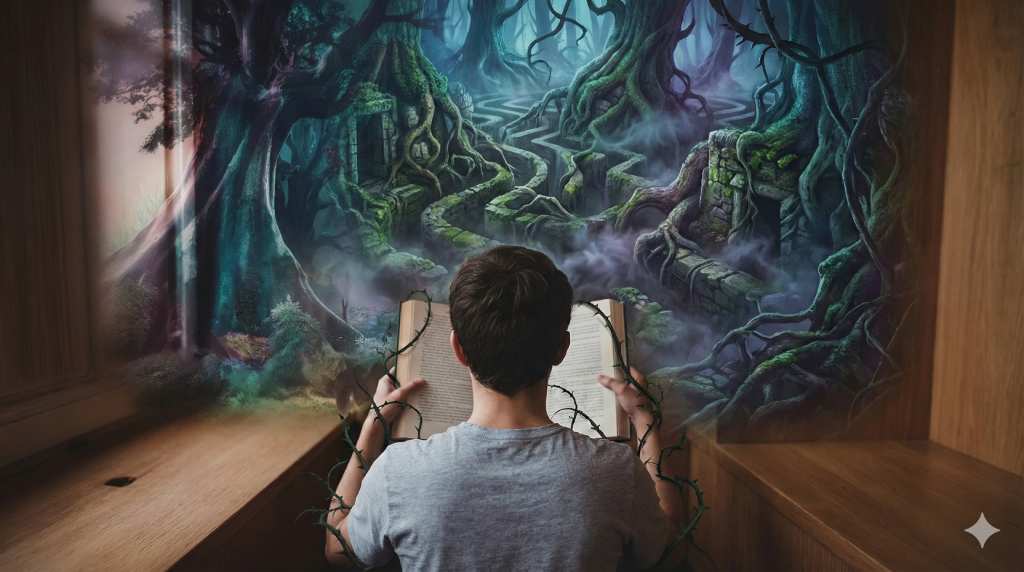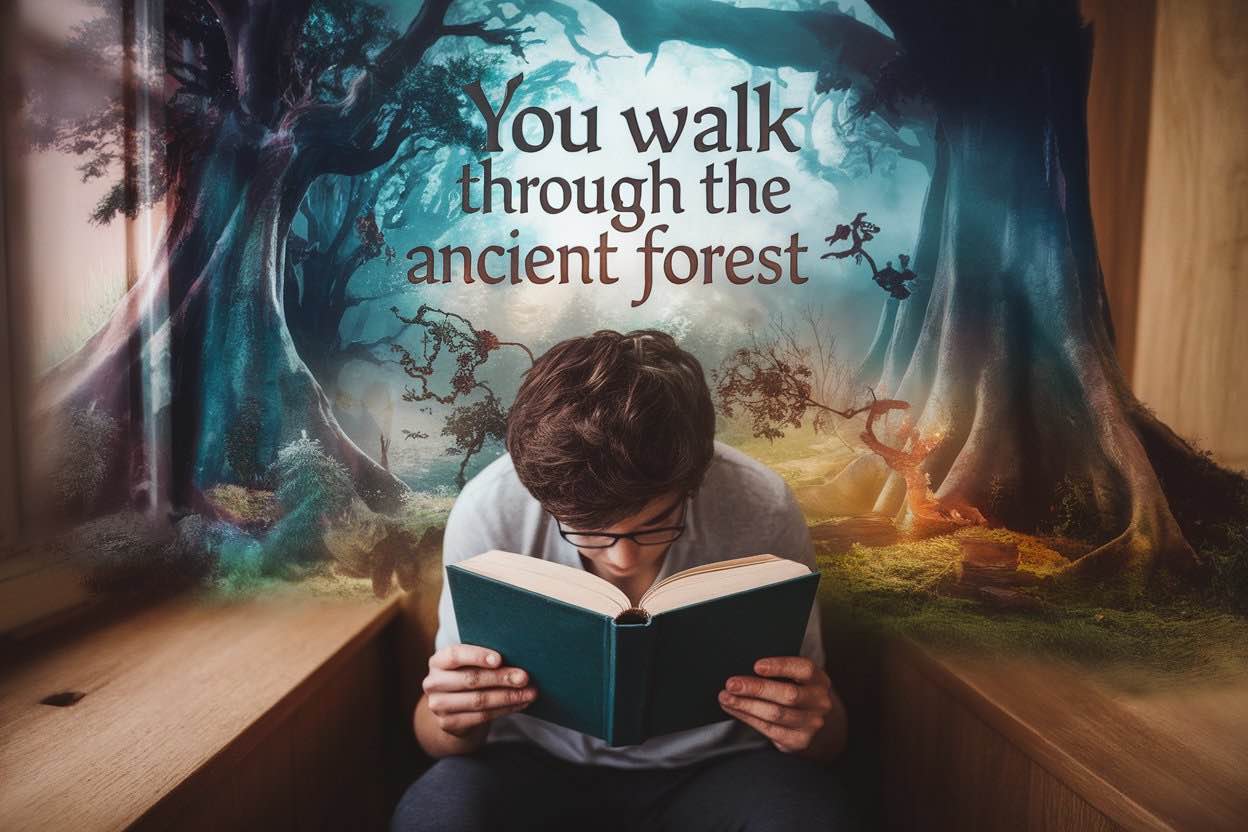A story’s point of view (POV) establishes the specific parameters of its reality. Where first-person (“I”) and third-person (“he,” “she”) narration present more conventional narrative structures, the second-person POV introduces a distinct structural proposition. It directly addresses the reader as “you,” creating an immediate and personal connection largely absent from other narrative modes.
The second-person POV positions the reader at the center of the action, casting them as the protagonist within the story. This immersive experience proves especially powerful in specific genres, such as certain modes of modern fiction and interactive formats like Choose Your Own Adventure books. By designating “you” as the central agent, authors challenge conventional narrative boundaries and shift the reader from a passive observer to an active participant.

How the Second-Person POV Engages Readers
Second-person narration is relatively rare in literature. Its uncommon usage arises from the challenge of maintaining narrative engagement without disrupting the flow. It requires the writer to skillfully craft the reader’s involvement in the story. This narrative mode effectively breaks the fourth wall and draws the reader into the story’s core. It offers a distinctive experience that makes the narrative feel immediate and intimate; it constructs a unique connection between the text and the reader.
The Reader’s Experience
The second-person perspective enacts a direct psychological experiment. The pronoun “you” functions as a command, grafting the narrative’s actions and sensations onto the reader’s sense of self. This superimposition denies the usual refuge of observational distance, forcing a continuous negotiation between the text’s directives and the reader’s own identity. The resulting tension, a blend of forced intimacy and cognitive friction, defines the perspective’s unique and potent effect.
Examples of How “You” Engages Readers
Through strategic use of “you,” writers can elicit strong emotional and intellectual responses. By experiencing feelings and reactions firsthand, readers engage emotionally, deepening the connection to the text. Similarly, intellectual engagement arises as readers evaluate their personal responses to hypothetical situations, creating a more profound connection.
Emotional Engagement:
- Imagine reading, “Your heart pounds in your chest as you creep down the darkened hallway, every creak of the floorboards sending shivers down your spine.” You’re likely to feel a surge of adrenaline and fear alongside the protagonist.
- If “you” fail a crucial test or lose a loved one in the narrative, the emotional blow can feel more significant than if it happened to a third-person character. When “you” are the one facing challenges and making decisions, the stakes feel higher and the consequences more personal.
- A story about “your struggles” with moral dilemmas can force you to confront your own values and beliefs. The second-person can spark introspection by asking the reader to consider how they would react in similar situations.
Intellectual Engagement:
- The second-person narrative constantly addresses and involves the reader, leading to a more intellectually stimulating experience. Choose Your Own Adventure books are a prime example, where “you” decide the course of the story, requiring active decision-making and engagement with the plot.
- A narrative where “you” must flee a war-torn country can produce a direct, visceral encounter with that experience. This structural placement of the reader into an unfamiliar circumstance applies pressure to fixed viewpoints. It can challenge assumptions and provoke a more substantive engagement with alternate realities.
- For example, a story where “you” grapple with the ethical implications of artificial intelligence can spark deeper reflection on the topic. The direct address of the second person can be used to effectively explore complex themes and ideas, making them more accessible and thought-provoking for the reader.
Famous Examples in Literature
Several authors have employed this technique to introduce a personal dimension to their stories.
Bright Lights, Big City (1984) by Jay McInerney stands as a notable example. The novel immerses the reader in the life of a young New Yorker navigating personal crisis. Its use of “you” establishes a direct, present-tense pressure within the protagonist’s reality.
In If On a Winter’s Night a Traveler (1979) by Italo Calvino, the second-person perspective cleverly draws readers into a metafictional narrative. This literary style blurs the line between the reader and the story, crafting a distinctive literary journey.
The Unbearable Lightness of Being (1984) by Milan Kundera occasionally shifts into second-person, a novel that inspires introspection on personal and political themes with a focus on philosophical questions with the characters.

Challenges for the Reader
Putting the reader directly into the story can sometimes feel disorienting, as it blurs the line between the reader’s identity and the fictional character. This style challenges the reader to reconcile their own identity with the actions and emotions in the text, unlike the clear character voice of first-person POV or the flexible external observation of third-person omniscient narration.
First- and third-person narration maintain a critical separation between reader and character; second-person narration erases this line. The narrative voice claims direct knowledge of “your” thoughts. This claim can feel invasive or artificial when it conflicts with what the reader knows to be true for themselves, removing the usual distance provided by other narrative points of view.
Consequently, the success of this technique relies on a precarious alignment. If the identity projected by the text feels inauthentic, the intended immersion fails. The reader rejects the role and disengages. This is the method’s central risk: the device designed to create profound intimacy can instead produce definitive alienation. This calculated gamble is what sets it apart, making its study a vital part of any comprehensive analysis of narrative perspective in literature.
Further Reading
Understanding Second-Person Point of View in Fiction [thesis paper, PDF file] by Anastasia L. Hawke, Utah State University
What do people think about second person? on Reddit
Why is the second person point of view rarely applied in narrative? on Quora
Stop It! There Is No Such Thing as 2nd Person Narration by Benjamin Gorman, teachergorman.com




